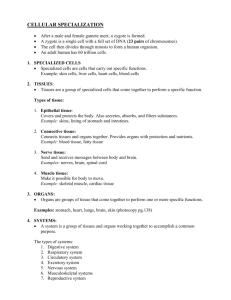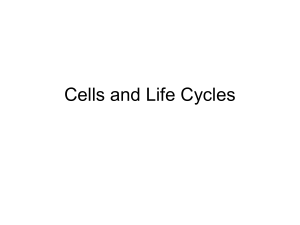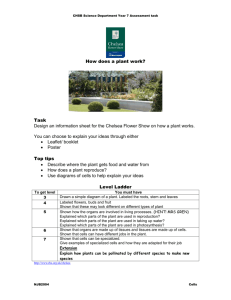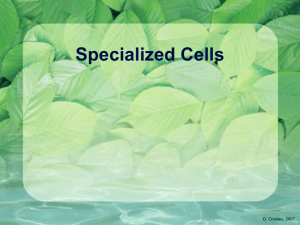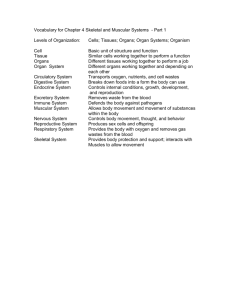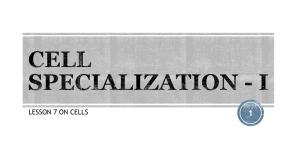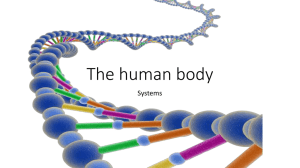26.1 Notes
advertisement
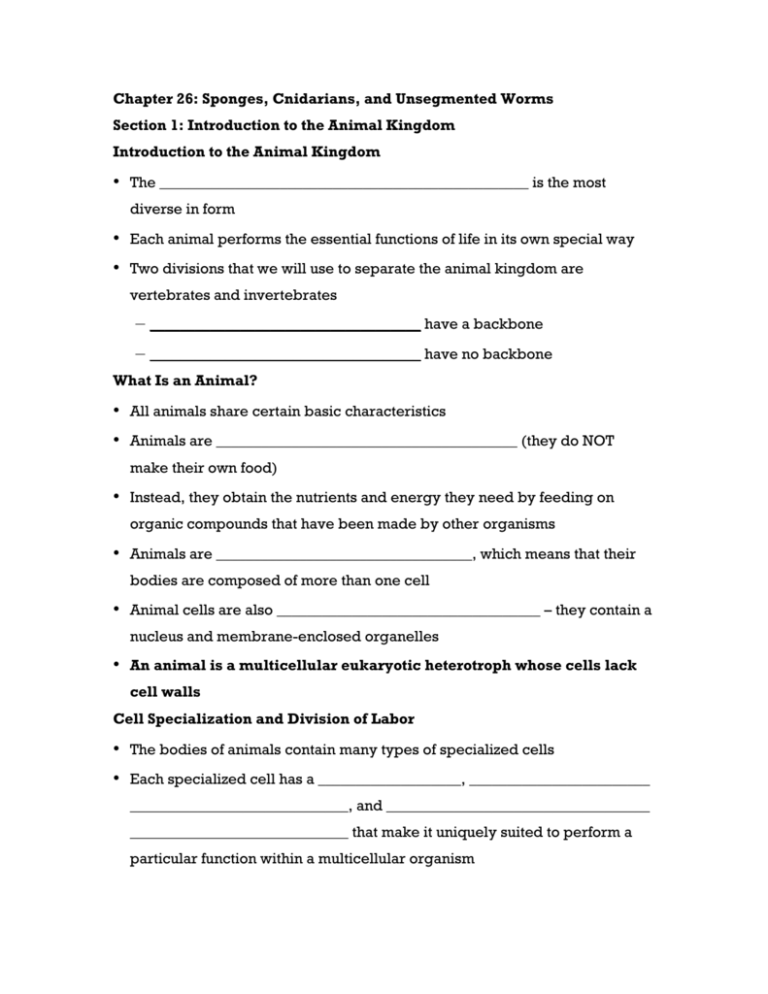
Chapter 26: Sponges, Cnidarians, and Unsegmented Worms Section 1: Introduction to the Animal Kingdom Introduction to the Animal Kingdom • The _________________________________________________ is the most diverse in form • Each animal performs the essential functions of life in its own special way • Two divisions that we will use to separate the animal kingdom are vertebrates and invertebrates – ____________________________________ have a backbone – ____________________________________ have no backbone What Is an Animal? • All animals share certain basic characteristics • Animals are ________________________________________ (they do NOT make their own food) • Instead, they obtain the nutrients and energy they need by feeding on organic compounds that have been made by other organisms • Animals are __________________________________, which means that their bodies are composed of more than one cell • Animal cells are also ___________________________________ – they contain a nucleus and membrane-enclosed organelles • An animal is a multicellular eukaryotic heterotroph whose cells lack cell walls Cell Specialization and Division of Labor • The bodies of animals contain many types of specialized cells • Each specialized cell has a ___________________, ________________________ _____________________________, and ___________________________________ _____________________________ that make it uniquely suited to perform a particular function within a multicellular organism • For this reason, groups of specialized cells carry out different tasks for the organism – ________________________________________ What Animals Must Do to Survive • In order to survive, animals must be able to perform a number of essential functions • For each animal group we study in the next several chapters, we will examine these functions and describe the cells, tissues, organs, and organ systems that perform them Feeding • Animals have evolved a variety of ways to feed • ____________________________ eat plants • ____________________________ eat animals • ____________________________ live and feed either inside or attached to outer surfaces of other organisms, causing harm to the host • ________________________________________ strain tiny floating plants and animals from the water around them • ________________________________________ feed on tiny bits of decaying plants and animals Respiration • Living cells consume _____________________________ and give off ________________________________________ in the process of cellular respiration • Entire animals must respire, or breathe, in order to take in and give off these gases • Small animals that live in water or in moist soil may respire through their _________________ • For large active animals, however, respiration through the skin is not efficient • The _______________________________________________ these animals have evolved take many different forms in adaptations suited to different habitats Internal Transport • Some aquatic animals can function without an internal transport system • But once an animal reaches a certain size, it must somehow carry ______________________, _______________________________, and ____________________________________________ to and from cells deep within its body • Many multicellular animals have evolved a ______________________________ ____________________________ in which a pumping organ called a ____________________ forces a fluid called ______________________ through a series of ____________________________________ Excretion • Cellular metabolism produces chemical wastes such as ____________________________ that are harmful and must be eliminated • Small aquatic animals depend on ____________________________ to carry wastes from their tissues into the surrounding water • But larger animals, both in water and on land, must work to remove poisonous metabolic wastes Response • Animals must keep watch on their surroundings to find food, spot predators, and identify others of their own kind • To do this, animals use specialized cells called _________________________, which hook up together to form a ______________________________________ • ________________________________________, such as eyes and ears, gather information from the environment by responding to light, sound, temperature, and other stimuli • The ___________________, which is the nervous system’s control center, processes the information and regulates how the animal responds • The complexity of the nervous system varies greatly in animals Movement • Some animals are ______________________________, which means that they live their entire adult lives attached to one spot • But many animals are _________________________, which means that they move around • To move, most animals use tissues called muscles that generate force by contracting • In the most successful groups of animals, muscles work together with a skeleton, or the system of solid support in the body • Insects and their relatives wear their skeletons on the outside of their bodies – _________________________________ • Reptiles, birds, and mammals have their skeletons inside their bodies – ___________________________________ • We call the combination of an animal’s muscles and skeleton its musculo – skeletal system Reproduction • Animals must reproduce or their species will not survive • Some animals switch back and forth between asexual and sexual reproduction • Many animals that reproduce sexually bear their young __________________ • Others __________________________ • The eggs of some species hatch into baby animals that look just like miniature adults • These baby animals increase in size but do not change their overall form – ________________________________________ • In other species, eggs hatch into __________________________, which are immature stages that look and act nothing like the adults • As larvae grow, they undergo a process called _______________________________________ in which they change shape dramatically – _____________________________________________ Trends in Animal Evolution • The levels of organization become higher as animals become more complex in form • The essential functions of less complex animals are carried out on the cell or tissue level of organization • As you move on to more complex animals, you will observe a steady increase in the number of _____________________________________________ • You will also see those tissues joining together to form more and more specialized organs and organ systems • Some of the simplest animals have radial symmetry; most complex animals have bilateral symmetry • Some of the simplest animals have body parts that repeat around an imaginary line drawn through the center of their body – ______________________________________ • Animals with radial symmetry never have any kind of real “head” • Many of them are sessile, although some drift or move in a random pattern • Most complex invertebrates and all vertebrates have body parts that repeat on either side of an imaginary line drawn down the middle of their body • One side of the body is a ___________________________________ of the other • These animals are said to have _________________________________________ – Animals with bilateral symmetry have specialized front and back ends as well as upper and lower sides • _______________________ = front end • _______________________ = back end • _______________________ = upper side • _______________________ = lower side • More complex animals tend to have a concentration of sense organs and nerve cells in their anterior (head) end • This gathering of sense organs and nerve cells into the head region is called ______________________________________ • Nerve cells in the head gather into clusters that process the information gathered by the nervous system and control responses to stimuli • Small clusters of nerve cells are called ________________________ – In the most complex animals, large numbers of nerve cells gather together to form larger structures called ____________________
